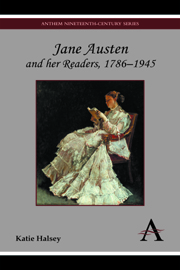Introduction
from Part One
Published online by Cambridge University Press: 05 July 2012
Summary
I am very strongly haunted by the idea that to those Readers who have preferred P&P. it [Emma] will appear inferior in Wit, & to those who have preferred MP. very inferior in good Sense.
Her exquisite story of ‘Persuasion’ absolutely haunted me.
This book is about the complex and unequal relationships between texts and readers. These take place in the realm of the imagination, although they have a partial manifestation in the material, in the form of writing. The first part of the book focuses on Jane Austen's negotiations with her reading, her reinterpretations of her period's strictures about reading women and women's reading, and her representations of readers in the novels, letters, juvenilia and fragments. It also discusses aspects of her style that have far-reaching ramifications in the responses of her readers. Part Two considers the textual and historical contexts of her works, and the kinds of relationships that historical readers have had with Austen and her novels. By examining Austen's British readers' views about reading generally, and specifically about reading Austen, as represented in their letters, journals, memoirs, critical writing and autobiographies, we come to a better understanding both of the qualities of Jane Austen's works, and of the practice of reading in Britain in different historical periods. My aim throughout this work is to maintain a dual focus on Jane Austen and her readers, conceiving of the relationship between them as a kind of conversation: a dynamic two-way process wherein readers respond to the novels, but the novels and characters are also brought to life, re-imagined, re-created and re-invented in and through the reading experience in its totality.
- Type
- Chapter
- Information
- Jane Austen and her Readers, 1786–1945 , pp. 3 - 16Publisher: Anthem PressPrint publication year: 2012

